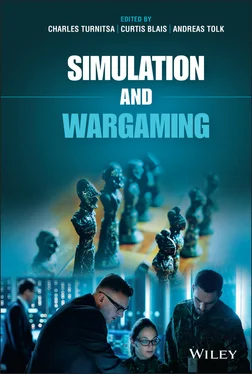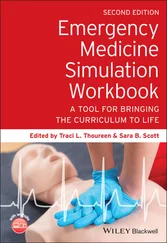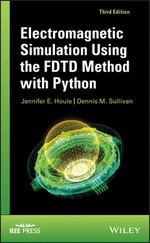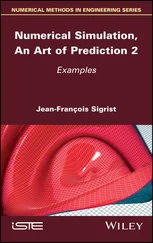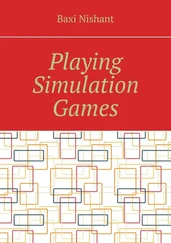Simulating the Reality of Combat
Many, if not most, of today’s computer‐based combat simulations are extraordinarily complex (the Concepts Evaluation Model, a theater‐level deterministic closed‐loop combat simulation used by the US Army’s Concepts Analysis Agency in the late twentieth century was over 250 000 lines of computer code). However, that complexity does not translate into a model that can accurately predict the outcome of combat. This complexity has given rise to two different schools of thought. Simulation skeptics refer to them as “black boxes,” which means that the users of these simulations have little to no understanding of the simulation’s processes that convert inputs into outputs. Some simulation advocates believe that with the complexity that these simulations have, all the processes of combat are modeled to a high degree of precision, thus the simulation’s outputs must be believed without question or debate. Subscribers to either school miss the fundamental truth that the models in these simulations are abstractions and approximations of some specific aspects of combat that the simulation was originally designed to model. All simulations are comprised of one or more models, and all models are an abstraction of reality, with some processes modeled explicitly, some implicitly, and some processes not modeled at all because the simulation’s designer did not intend for the simulation to address those excluded processes. Prospective simulation users need to do some research and come to at least a basic understanding of what a simulation under consideration for use in a particular study was originally designed to model, and what its strengths and shortcomings are before they select a simulation that will be useful for the purpose at hand. In a RAND paper examining non‐monotonic, chaotic output from a very simple deterministic, Lanchester‐based combat simulation (2 variables, 18 data elements, and 8 rules), the authors state “The typical model simulates combat between opposing forces at some level of abstraction. No combat model is seriously expected to be absolutely predictive of actual combat outcomes. It is common, however, to expect models to be relatively predictive. That is, if a capability is added to one side and the battle is refought, the difference in battle outcomes is expected to reflect the contribution of the added capability.” 32 This concept of relative predictability underpins the usage of simulations to conduct Analyses of Alternatives, or AoAs, studies that are used to justify weapon system acquisitions in DoD.
The Capability and Capacity of Modern Computing to Represent Combat
Moore’s law, the idea that the processing power of computers doubles every 18–24 months, has led to the school of thought that our simulations are accurate representations of kinetic combat. However, most of the combat simulations in use today have their roots in the 1960s or 1970s, and in most cases, the computer code has not been optimized to take advantage of this increase in processing power. But even more significant is the notion of artificial intelligence (AI) and the idea that we can accurately represent, to the minute detail, every aspect of combat. The advances in AI that should dissuade us of this notion begin with IBM’s computer “Deep Blue” that was programmed to play chess. In 1997, Deep Blue was able to beat Garry Kasparov, at the time a reigning chess champion. 33 A more recent AI triumph was “AlphaGo.” AlphaGo was programmed to play the ancient game of Go, and was able to beat world Go champion Ke Jie in 2017. 34 “As Deep Blue and AlphaGo have demonstrated, in games of finite size with well‐specified rules, computers can use artificial intelligence (AI) techniques to top human performance.” 35
Let us now begin to examine ground combat and see if it fits the description of the type of games AI has successfully mastered, specifically finite size and well‐specified rules.
For finite size, we need to consider the number of pieces, or entities, and the size of the game board, or terrain box.
Number of Pieces/Entities
Chess has six different types of pieces: pawn, knight, bishop, rook, king, and queen, for a total of 16 pieces per side, or 32 total pieces. The US Army’s Armored Brigade Combat Team (ABCT) has over 4700 soldiers and over 1300 vehicles, including 90 tanks, 90 infantry fighting vehicles, 112 armored personnel carriers, 18 self‐propelled howitzers, and 4 unmanned aerial vehicles. 36 This does not include other assets that would support the ABCT in combat, such as Army and Air Force attack aircraft, and Army logistics assets. When an ABCT is represented in a combat simulation, only the primary combatants are represented, which would be about 300 vehicles and 200 infantry, or 500 of the 6000 entities that would actually be on the battlefield. Assuming the ABCT’s adversary was similarly equipped and a similar size, the total entities that would be represented in the simulation would be around 1000, as compared to the 32 chess pieces.
The game of chess has 64 squares, alternating in color but identical otherwise. The chess board is two‐dimensional, that is the 64 squares all occupy the same plane. The modern battlefield whether it be the mountainous terrain of Afghanistan, Korea, or Iran; the open and rolling terrain of the North German Plain; or the deserts of Iraq and Kuwait is a three‐dimensional terrain: mountains, hills, plains, and valleys. That terrain is broken up by water: rivers, streams, lakes, swamps. There can be vegetation and man‐made objects that sit on top of the terrain. The terrain and these objects, unlike the chess board, change over time. Rain and snow change the trafficability of the terrain for combat systems, and it can be different for different types of systems (wheeled versus tracked and dismounted infantry). The terrain can be deformed by digging trenches, building obstacles, and explosions. Vegetation can change over time – a deciduous forest has much better lines of sight after the trees have dropped their leaves. Man‐made objects can be rubbled or destroyed. For the time being, we will ignore the airspace above the terrain, but fixed and rotary wing aircraft, manned and unmanned, are an integral part of modern ground combat, given the weather permits. And if we do represent aircraft, we cannot forget that rounds fired from artillery and mortars do share the same airspace as aircraft.
Let us now consider rules. For ease of understanding and simplicity, we will only cover the major rules for movement, attack, adjudication, and victory conditions.
The movement rules of chess are fairly straightforward: each of the six pieces has unique movement rules. Moves are alternated between the two players, that is one player moves, and that move is observed and then analyzed by the opponent before the opponent moves. There is really no time–distance factor in a chess move, only one piece can be moved in a turn, and it must conform to the movement rules for that given piece. In a move, the more mobile pieces (queen, bishop, rook) can move from one end of the board to the other, while the king is limited to one square per move. If we considered chess as a wargame, it would be an open wargame, all information is available to all players.
Ground combat systems’ movement is dictated by the terrain and the objects that rest on the terrain. As in chess, the different weapon systems have different movement “rules.” Tanks and other tracked vehicles are better in open and rolling terrain, and struggle in mountainous and forested terrain. Wheeled vehicles move well on roads and can move well in open and rolling terrain if it is firm, that is, not impacted by weather or torn up by tracked vehicles. Dismounted infantrymen can go almost anywhere, but not very quickly. All movement may also be modified by a commander’s orders. Units may be ordered to stop at a certain point or to proceed until a given objective has been accomplished. Movement in a ground combat environment can be simultaneous and almost constant. Unlike chess, there are no discrete, alternating moves – movement is fluid and nearly nonstop. The observation of one side’s moves by the other depends on the sensors deployed to observe, and observations may be mitigated or obscured by deception as well as environmental effects.
Читать дальше
